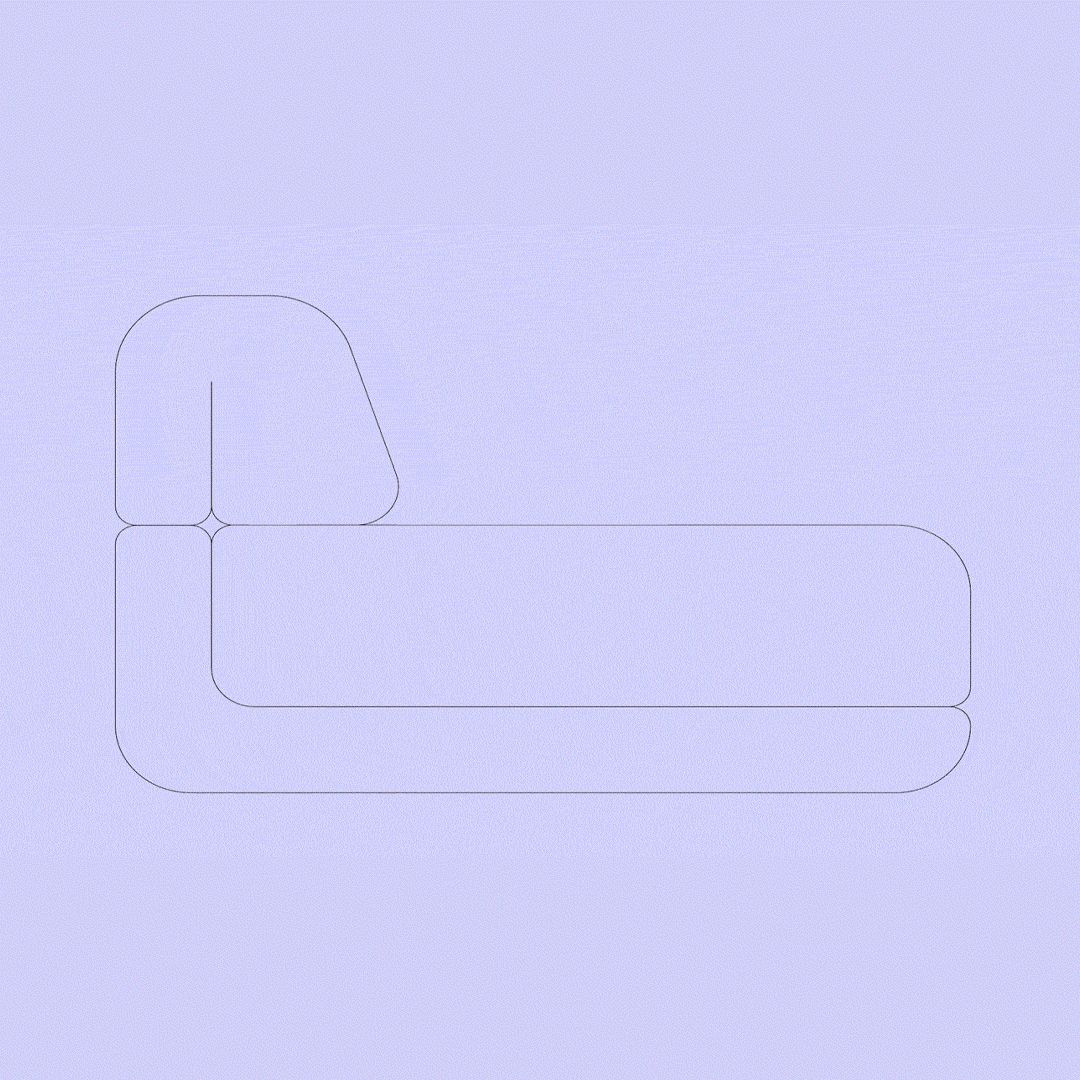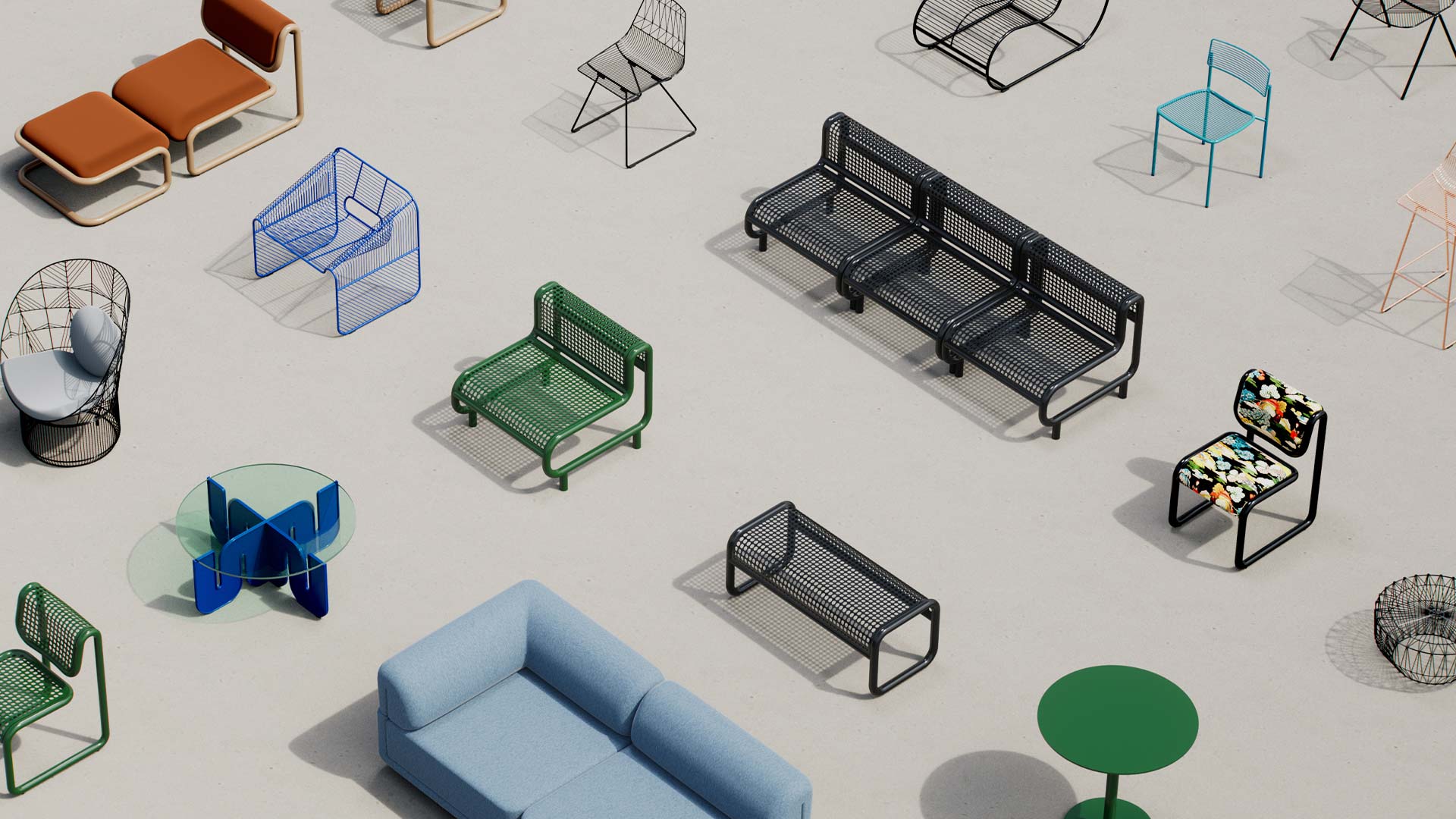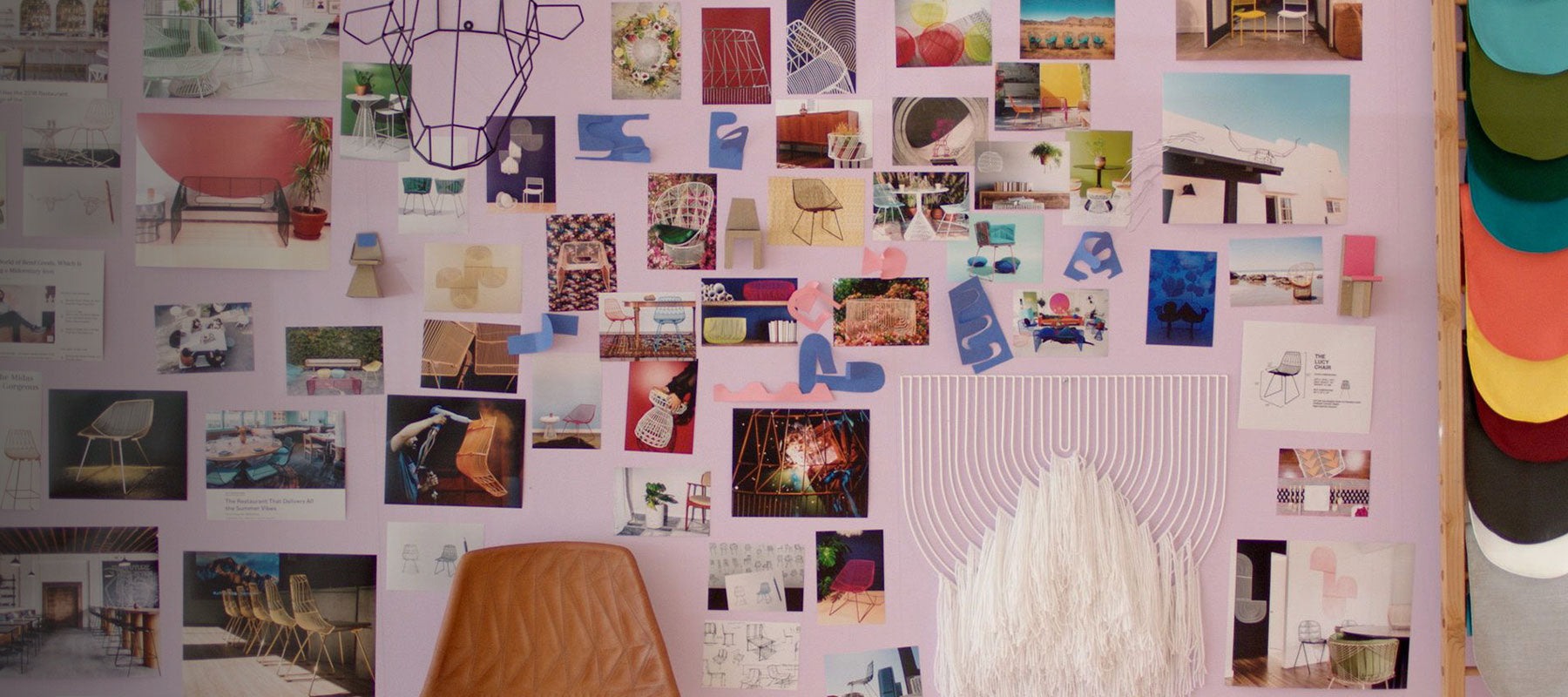
Who Are We
Bend Goods is a Los Angeles based designs studio that manufactures chairs, tables, and furnishings for work, home, and community.
We revolutionized the wire furniture industry with the introduction of the Lucy chair, which has received noteworthy recognition with the inclusion into LACMA’s permanent collection. Our chairs are also featured in John Lautner’s architectural masterpiece, the Sheats-Goldstein residence.
Founded in 2010 by Gaurav Nanda, a sculptor, a visual designer, who had an interest in combining elements of minimalism with utility. Nanda’s works are formulated from different shapes while shifting scale and form. His distinctive lines emerged from his drawing practice, vibrant use of color and modern gestures.
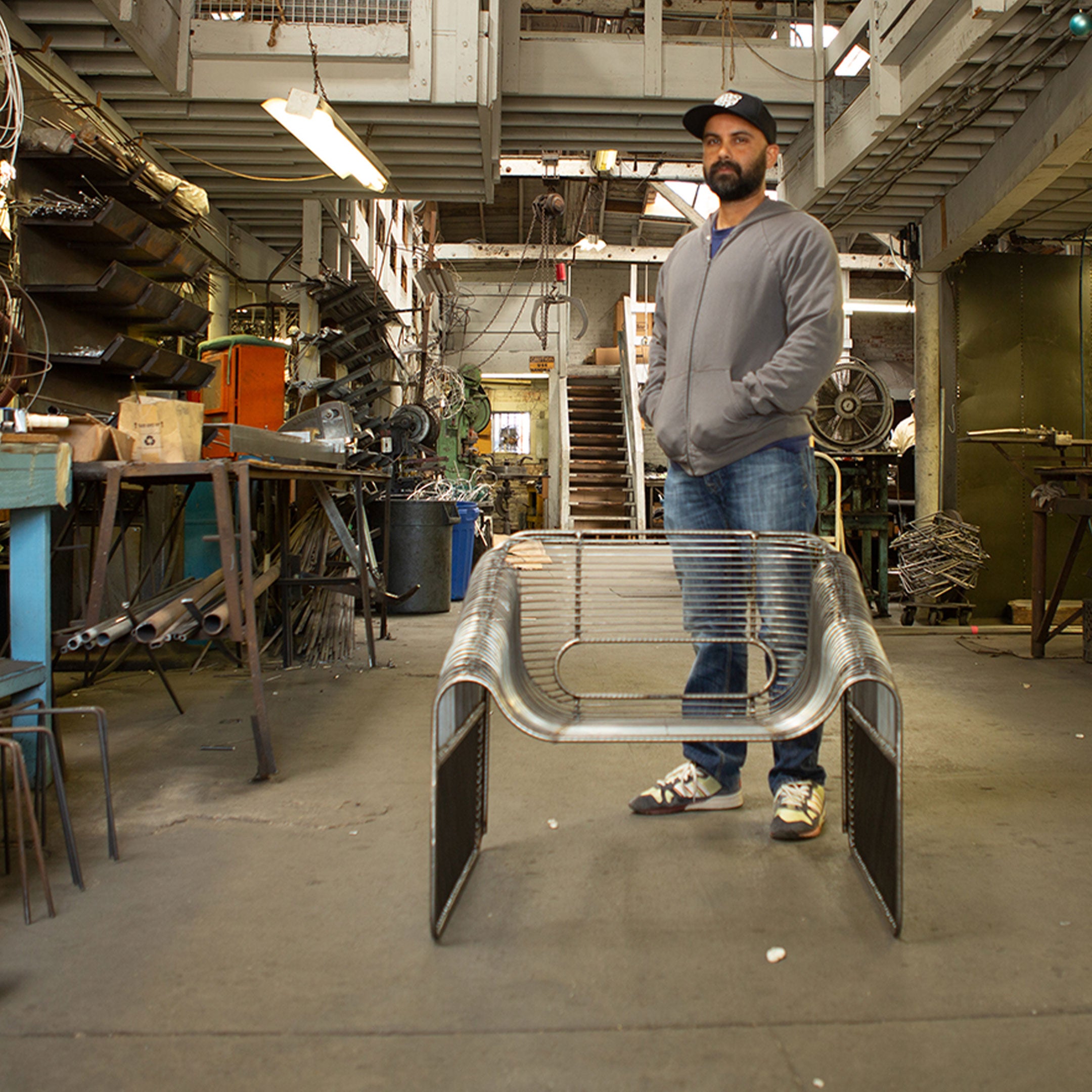
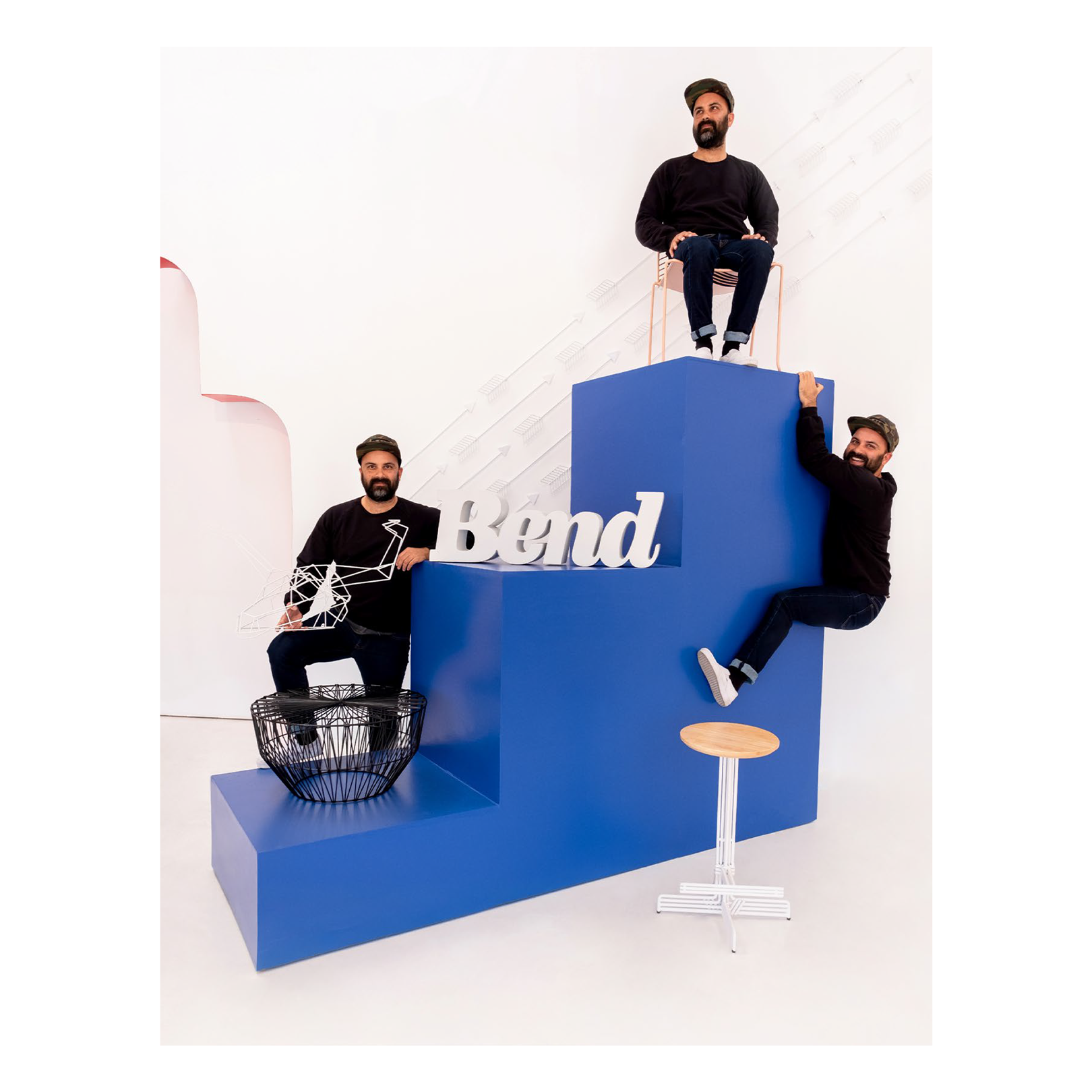
About The Founder
Nanda grew up in a creative household, inspired by entrepreneurial parents and drawn to art from a young age. He explored many mediums but felt a deep connection to pottery, shaping a lifelong interest in hands-on design. After studying 3D Modeling & Animation at Purdue University, he joined General Motors as an Automotive Sculptor, blending digital tools with physical modeling—an experience that deepened his understanding of form, function, and design.
After seven years in the corporate world, Nanda reached a turning point. He realized he wanted more creative freedom and saw an opportunity to apply his sculptural skills in a new way: furniture. The idea struck—wire could be both expressive and structural, and furniture could be a form of functional art.
With that vision, Bend Goods was born. After many prototypes and a move to Los Angeles, Nanda launched a line of wire furniture focused on pattern, comfort, color, and versatility. What began with one chair grew into a full collection, always guided by the original intention to merge creativity and utility.
What Materials We Use
We turn industrial wire into functional, expressive furniture by bending, welding, and finishing it in bold colors. Lightweight yet strong, wire lets us explore unexpected shapes and build pieces that are both visually striking and structurally sound.
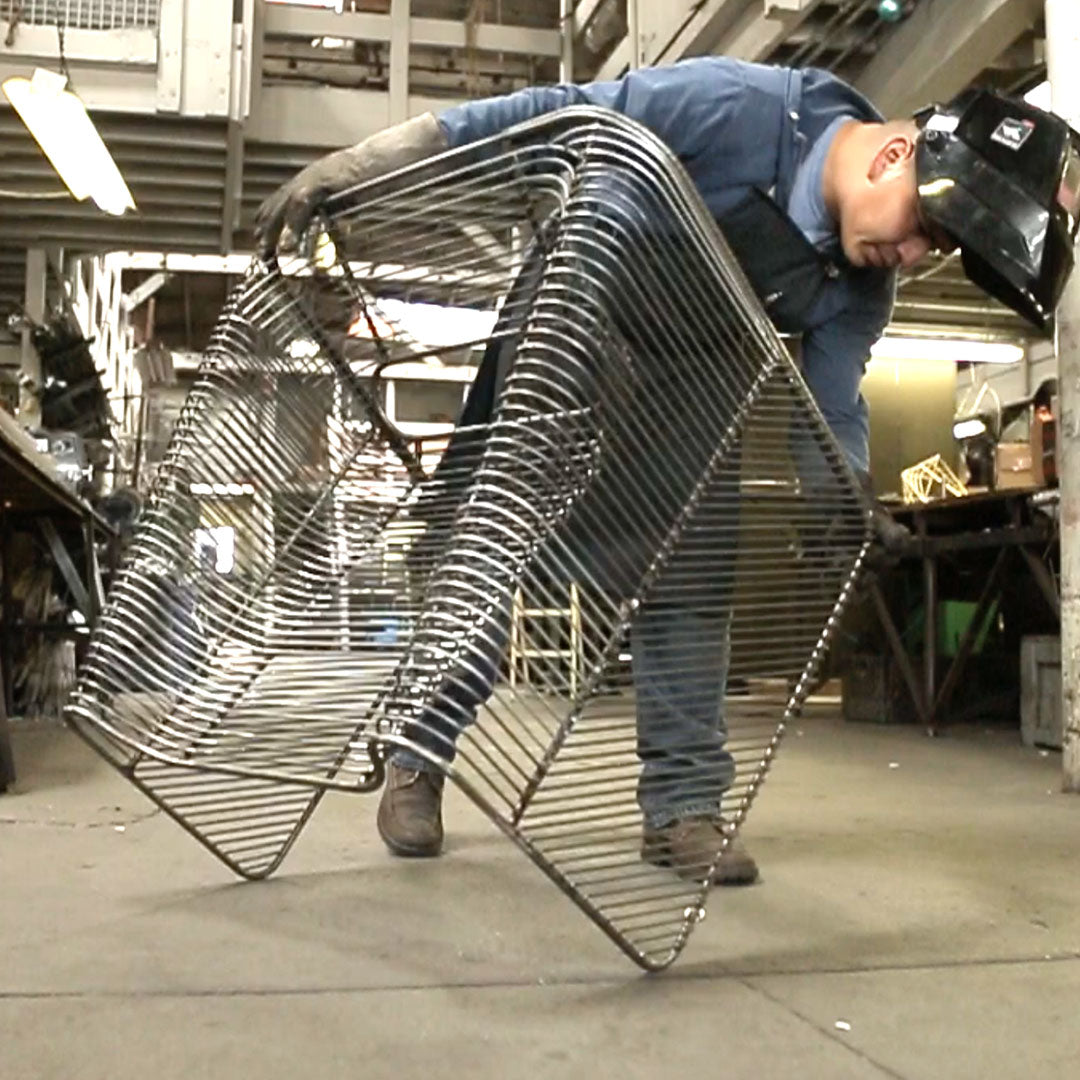
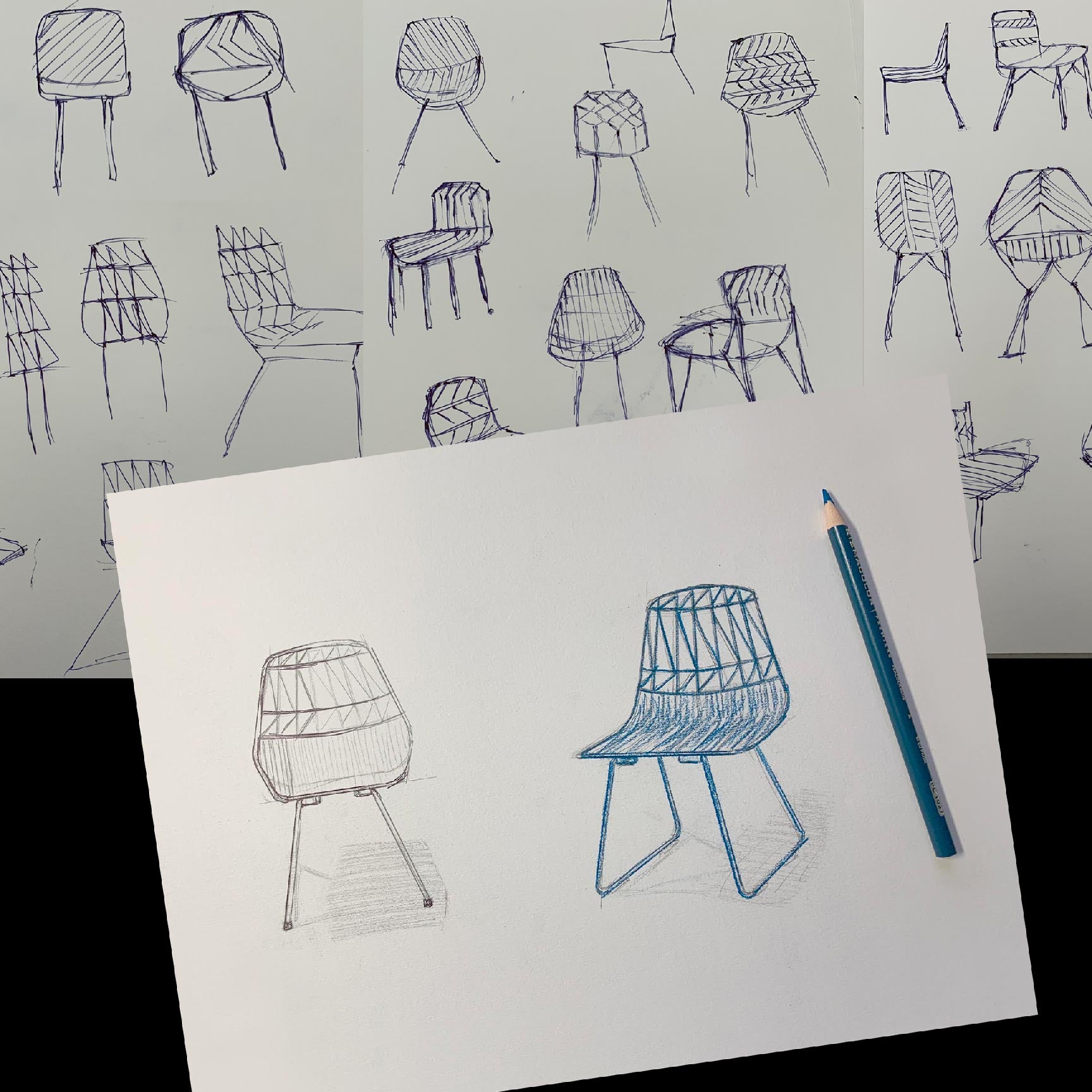
Our Process: Sketches
When lightning strikes, it’s time for another napkin sketch—rough doodles that make an idea a little more tangible. These napkin sketches go to our 3D designer to play with form and shape. Here, we find ourselves in a back and forth, a Waltz if you will.
“Inspiration comes from anywhere: nature. Design. People. Music. Like when you hear a new beat, and you’re suddenly inspired to dive deep in your own work, motivated more than ever.”- Gaurav Nanda
Our Process: 3D Modeling
It’s not uncommon that we want something that seems like it can’t be done. We play with digital models, drawing and redrawing until we reach that Aha moment. Once we feel good about our digital models, we create cardboard samples that inform the shape, size, and look of what will be our first metal prototype.
